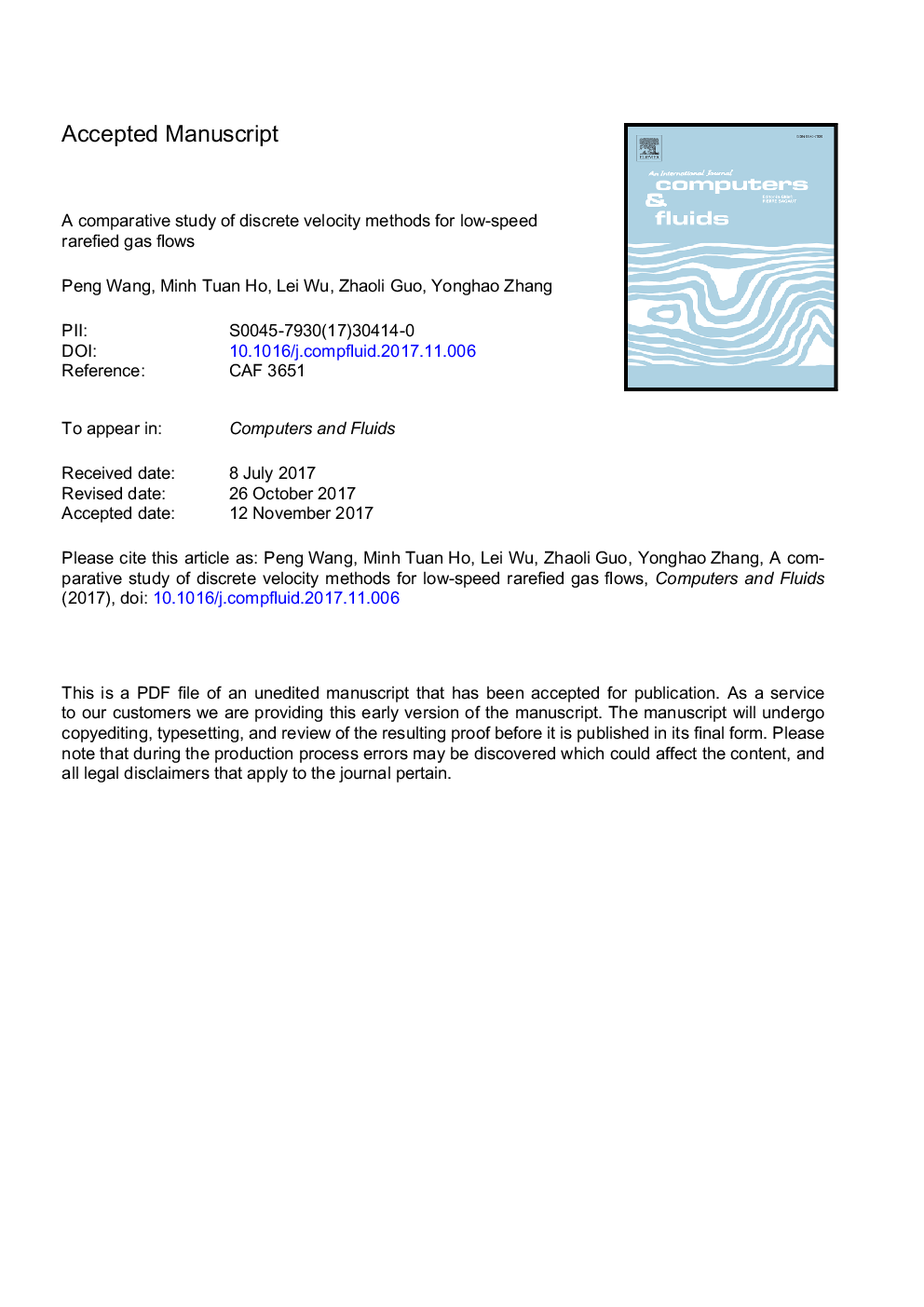| Article ID | Journal | Published Year | Pages | File Type |
|---|---|---|---|---|
| 7156498 | Computers & Fluids | 2018 | 47 Pages |
Abstract
In the study of rarefied gas dynamics, the discrete velocity method (DVM) has been widely employed to solve the gas kinetic equations. Although various versions of DVM have been developed, their performance, in terms of modeling accuracy and computational efficiency, is yet to be comprehensively studied in all the flow regimes. Here, the traditional third-order time-implicit Godunov DVM (GDVM) and the recently developed discrete unified gas-kinetic scheme (DUGKS) are analysed in finding steady-state solutions of the low-speed force-driven Poiseuille and lid-driven cavity flows. With the molecular collision and free streaming being treated simultaneously, the DUGKS preserves the second-order accuracy in the spatial and temporal discretizations in all flow regimes. Towards the hydrodynamic flow regime, not only is the DUGKS faster than the GDVM when using the same spatial mesh, but also requires less spatial resolution than that of the GDVM to achieve the same numerical accuracy. From the slip to free molecular flow regimes, however, the DUGKS is slower than the GDVM, due to the complicated flux evaluation and the restrictive time step which is smaller than the maximum effective time step of the GDVM. Therefore, the DUGKS is preferable for problems involving different flow regimes, particularly when the hydrodynamic flow regime is dominant. For highly rarefied gas flows, if the steady-state solution is mainly concerned, the implicit GDVM, which can boost the convergence significantly, is a better choice.
Related Topics
Physical Sciences and Engineering
Engineering
Computational Mechanics
Authors
Peng Wang, Minh Tuan Ho, Lei Wu, Zhaoli Guo, Yonghao Zhang,
